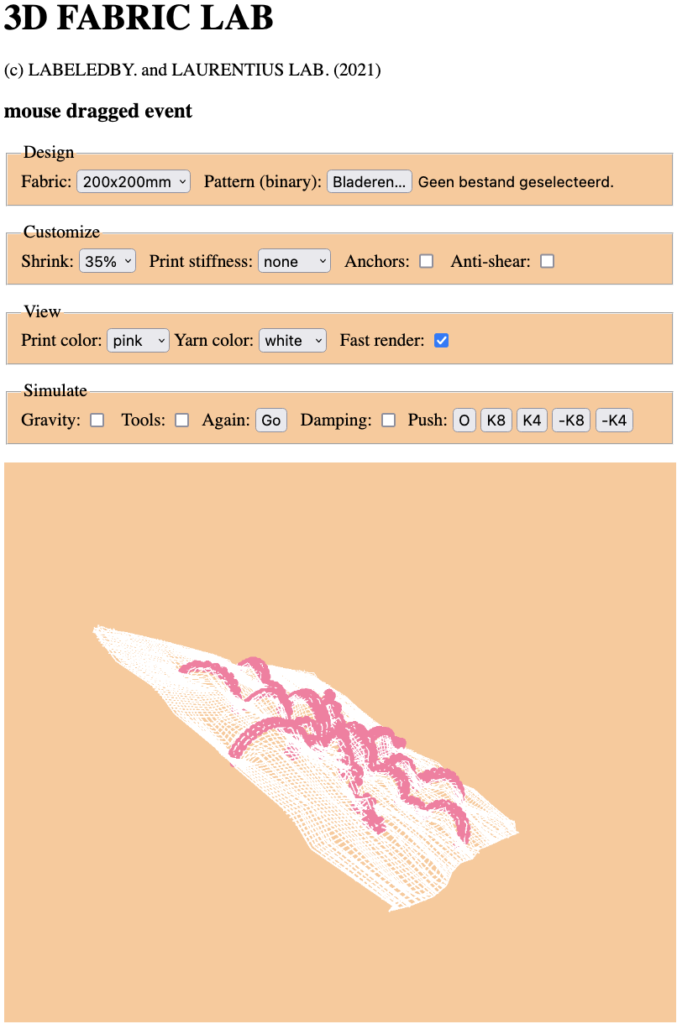Today, Fashion is made and worn with data as a material [Nachtigall 2021]. Data and computation go hand in hand, and indeed, every fabric mysteriously computes its own drape and shape. LAURENTIUS LAB. develops tools to study the beautiful creations produced by LABELEDBY., 3D printed onto pre-stretched fabrics. In 1959, Buckminster Fuller introduced tensegrity, the combination of “tensile” and “integrity”, which is precisely what happens when pre-stretch and 3D print meet. Combining Newton’s and Hooke’s laws with a small-step approximation algorithm, we can explore how the fabric will behave. Try our simulator prototype here:
These simulations resemble the Kangaroo form-finding of Rhino. But unlike such CAD, we work directly in Javascript, which means the new tools can be embedded in any website. The customer can play with the simulations. The simulator prototype has four panels with settings and options as follows:
- Design: Fabric size (e.g. 200x200mm) can be set and there is an option to upload a Pattern STL file in binary format of size less than the chosen fabric. The simulator assumes the fabric to have 100×100 cells, so make sure that any 3D printed strip is at least two or three cells wide. The STL file can contain up to a few hundred triangles (but not thousands). The triangles are flattened from XYZ to XY.
- Customize: Shrink percentage (e.g. 20%) models the amount of pre-stretch. Print stiffness (e.g. choose “default”) models the 3D print material. The Anchors checkbox serves to fixate the four corners. The Anti-shear checkbox simulates a fabric which tries to keep its cells square (less shearing).
- View: set Print color and Yarn color. The Fast render checkbox sacrifices some simulation speed for more accurate grid rendering.
- Simulate: include a Gravity checkbox (usually off), optional Tools for calibration purposes, a Go button (start all over). Damping makes the simulator more stable but slower. The Push buttons work as a mechanical push at specific positions (for example when trying to enforce getting a symmetric rosette).
The simulation window shows the ongoing simulation. Mouse left button allows for rotating the entire object and the mouse scroll-wheel supports zooming-in and out.

